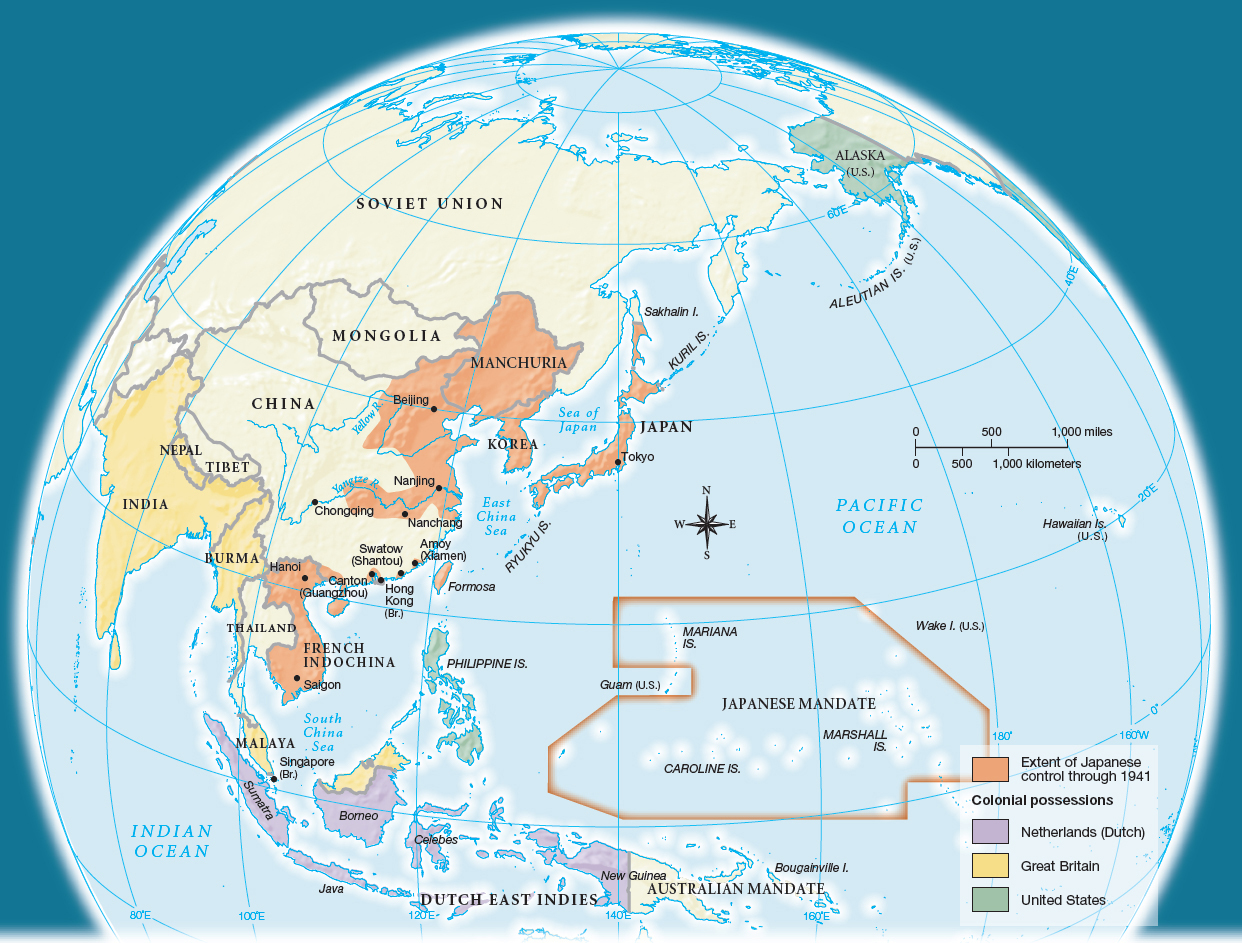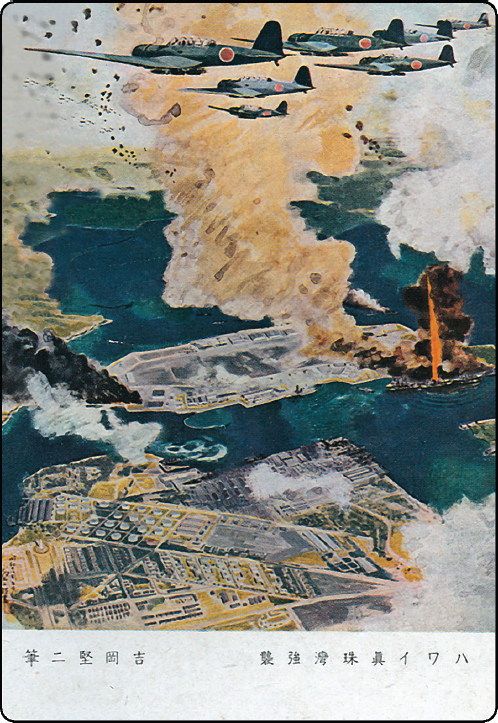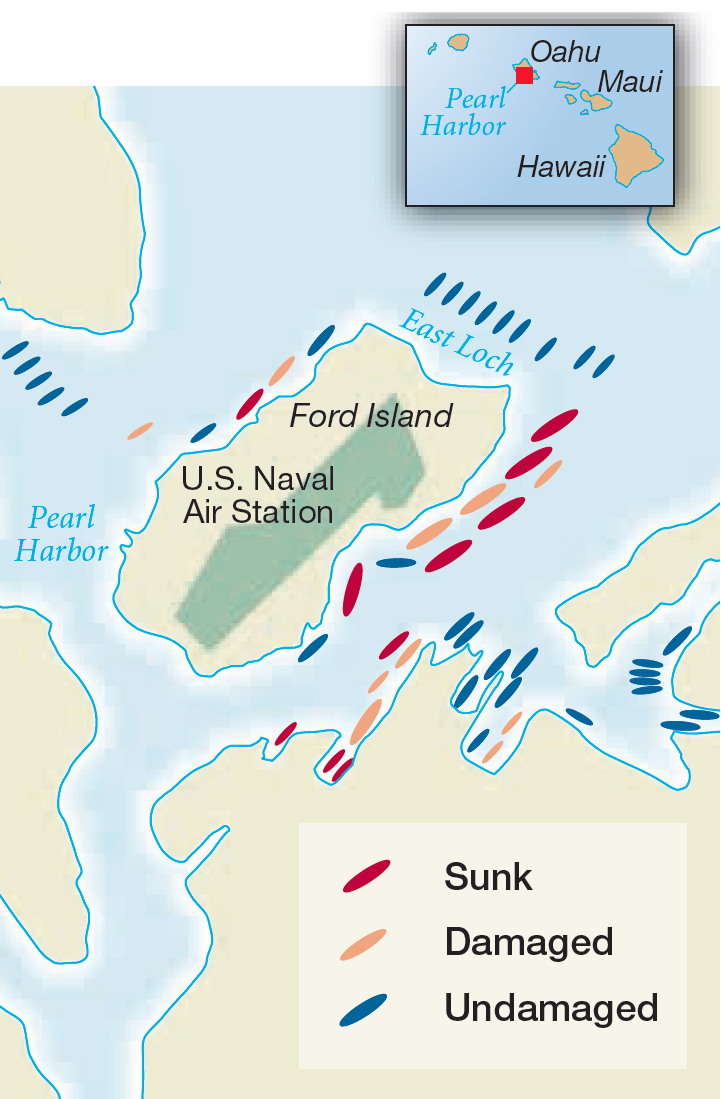Japan Attacks America
Printed Page 751
Although the likelihood of war with Germany preoccupied Roosevelt, Hitler exercised a measure of restraint in directly provoking America. Japanese ambitions in in India and Burma, the French in Indochina (now Vietnam), and the Dutch in the East Indies (now Indonesia), the Japanese campaigned to preserve “Asia for the Asians.” Japan’s invasion of China — which had lasted for ten years by 1941 — proved that its true goal was Asia for the Japanese (Map 25.2). Japan coveted the raw materials available from China and Southeast Asia, and it ignored American demands to stop its campaign of aggression.

CHAPTER LOCATOR
How did the United States respond to international developments in the 1930s?
How did the outbreak of war affect U.S. foreign policy?
How did the United States mobilize for war?
How did the Allies turn the tide in Europe and the Pacific?
How did the war change life on the American home front?
How did the Allies finally win the war?
Conclusion: Why did the United States emerge as a superpower at the end of the war?
 LearningCurve
LearningCurve
Check what you know.

In 1940, Japan signaled a new phase of its imperial designs by entering a defensive alliance with Germany and Italy — the Tripartite Pact. To thwart Japanese plans to invade the Dutch East Indies, in July 1941 Roosevelt announced a trade embargo that denied Japan access to oil, scrap iron, and other goods essential for its war machines. Roosevelt hoped the embargo would strengthen factions within Japan that opposed the militarists.
Instead, the American embargo played into the hands of Japanese militarists headed by General Hideki Tojo, who seized control of the government in October 1941 and persuaded other leaders, including Emperor Hirohito, that swift destruction of American naval bases in the Pacific would leave Japan free to follow its destiny. On December 7, 1941, 183 aircraft lifted off six Japanese carriers and attacked the U.S. Pacific Fleet at Pearl Harbor on the Hawai’ian island of Oahu. The devastating surprise attack sank all of the fleet’s battleships, killed more than 2,400 Americans, and almost crippled U.S. war-making capacity in the Pacific. Luckily for the United States, Japanese pilots failed to destroy oil storage facilities at Pearl Harbor and any of the nation’s aircraft carriers, which happened to be at sea during the attack.
The Japanese scored a stunning tactical victory at Pearl Harbor, but in the long run the attack proved a colossal blunder. The victory made many Japanese commanders overconfident about their military prowess. Worse for the Japanese, Americans instantly united in their desire to fight and avenge the attack. Roosevelt vowed that “this form of treachery shall never endanger us again.” On December 8, Congress endorsed the president’s call for a declaration of war. Both Hitler and Mussolini declared war against America on December 11, bringing the United States into all-out war with the Axis powers (Germany, Italy, and Japan) in both Europe and Asia.

QUICK REVIEW
Question
How did Roosevelt attempt to balance American isolationism with the military aggression of Germany and Japan in the late 1930s and early 1940s?
CHAPTER LOCATOR
How did the United States respond to international developments in the 1930s?
How did the outbreak of war affect U.S. foreign policy?
How did the United States mobilize for war?
How did the Allies turn the tide in Europe and the Pacific?
How did the war change life on the American home front?
How did the Allies finally win the war?
Conclusion: Why did the United States emerge as a superpower at the end of the war?
 LearningCurve
LearningCurve
Check what you know.